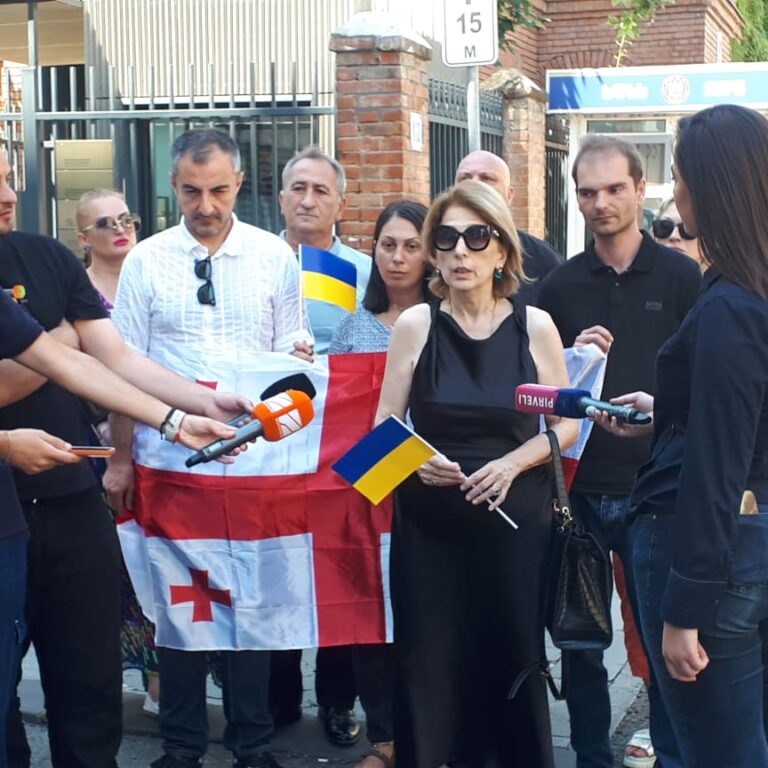On March 7, 2024, a drifting sea mine was discovered off the Romanian coast. This is the sixth mine discovered near the coast of Ukraine’s southern neighbor since the full-scale invasion [1]. Mines continue to provide a significant challenge for shipping throughout the Black Sea, particularly in its northern region, which is critical to the operation of the grain corridor.
Thus, on October 5, 2023, a Turkish civilian ship was blown up by a mine [2], on October 16, a Liberian-flagged tanker [3] was a victim of a mine, on November 16 of the same year, a mine struck a Liberian dry cargo [4], and on December 28, a Panama-flagged bulk carrier was damaged [5]. Mines, along with missiles, remain a tool for the adversary to impact Ukrainian sea trade in conditions where the aggressor’s fleet sustained losses and was forced to remote ports. Expert Oleksiy Obruchnyk looked into the situation.
Ukraine appears to have few options for defusing mines near its coasts and along shipping routes right now. Bulgaria, Romania, and Turkey formed the Black Sea Naval Mine Action Group in January 2024 to address this issue. The consortium intends to focus on mine detection and disposal, as well as the protection of maritime routes against mine hazards [6]. As a result, trawling in the Black Sea is likely to begin in 2024. However, what are the mines that may be found? These mines are quite likely to be of Ukrainian origin.
In March 2022, Ukraine’s Ministry of Foreign Affairs made a statement regarding the aggressor state’s use of uncontrolled drifting sea mines, which had already been found near the borders of Romania and Turkey. According to the statement, the mines were taken from Ukrainian stockpiles in the Crimea in 2014 [7]. This trend continues to this day. Thus, in October 2023, the Ukraine Naval Forces’ spokesman, Dmytro Pletenchuk, said that the invaders continue to utilize free-floating sea mines to hamper civilian commerce in the Black Sea, namely Ukrainian mines seized in the Crimea [8].
In a 2022 statement, Ukraine’s Ministry of Foreign Affairs characterized the occupation’s use of free-floating sea mines as a war crime, which consists in the use of sea mines as a weapon of indiscriminate action, which spreads uncontrollably in the waters of the Black Sea and insisted on bringing Russia to international responsibility. With the formation of the international anti-mine group, the issue of responsibility moves into the practical realm, as it becomes critical to demonstrate that the mines that can fall into the hands of other states, and thus investigated and identified, were used by the aggressor state, not Ukraine.
The aggressor state should carry international legal responsibility for their usage, while military personnel who gave and followed out orders to mine the Black Sea should face criminal charges for war crimes. But what exactly is about responsibility? International law expressly outlaws only specific types of explosive devices used on land, such as booby traps disguised as household objects or toys. There is a movement for a complete ban on anti-personnel mines, but it has not yet resulted in universal recognition of their illegality.
The situation with floating mines is even less clear. The VIII Hague Convention on Submarine Mines of 1907 remains the sole international convention that restricts the use of sea mines [10]. According to Article 1 of this document, the use of free-floating anti-ship mines is prohibited unless they become harmless one hour at most after the person who laid them ceases to control them, or if control over them is not lost in another way.
Ukraine and Russia are not parties to this international treaty, but the mine provisions are highly likely to have become customary international law, as evidenced by their repetition in the 1994 San Remo Manual on the International Law of the Sea Applicable to Armed Conflicts at Sea [11]. This text is currently regarded as the most comprehensive theoretical generalization of international customary norms governing naval combat.
As can be seen, anti-ship mines are not illegal in and of themselves; nevertheless, when they are employed, it is important to guarantee that they become safe once they are removed from their mooring. In contrast, such a free-floating sea mine may endanger civilian vessels, violating the fundamental principle of distinction in the law of war. In this situation, the use of free-floating sea mines could be considered as an indiscriminate attack on civilian targets.
Article 51 of Additional Protocol I to the Geneva Conventions addresses indiscriminate attacks [12]. It forbids indiscriminate attacks, which include “attacks that employ methods or means of warfare that cannot be directed at specific military objects” as well as “attacks those which employ a method or means of combat the effects of which cannot be limited… and consequently, in each such case, are of a nature to strike military objectives and civilians or civilian objects without distinction”.
In the case of sea mines, the mine serves as a means of attack. It is not forbidden as a method, but it remains legal only if it fits the above-mentioned requirements of customary international law regarding sea mines, namely, that it be attached to the place of installation. In this situation, it is reasonable to expect the mine to strike a specific target, such as an enemy cruiser capable of traveling along a certain route.
However, the enemy’s use of Ukrainian mines as a Russia’s “Crimean” trophy raises at least two concerns about their effectiveness as a weapon of war. First, can it be said that an attack with sea mines is aimed at Ukrainian warships (a “valid military target”) when it is known that Ukraine only uses tiny vessels at sea, for which sea mines are not designed? If there are no Ukrainian ships in the sea, what is the purpose of the sea mine attack, if not to target civilian ships?
Second, even if the aggressor state’s use of sea mines may be “rationalized by military necessity”, given that Ukrainian warships could theoretically be at sea, how can the deployment of free-floating mines be justified? According to the abovementioned provisions of the Hague Convention of 1907, which presumably have acquired customary status in international law, if such a mine is not rendered safe one hour after it has separated from its mooring, it becomes an illegal means of warfare in and of itself, regardless of whether it was originally intended to attack legitimate military objectives.
Thinking about these two questions necessarily leads to the conclusion that the sea mines used by Russia n are an illegal means of warfare. At the same time, the way in which it uses them is an illegal method of warfare, because under the existing conditions, sea mines become a weapon of attack, the consequences of which cannot be limited, as confirmed by numerous cases of detonation of mines on civilian ships. Therefore, the use of Ukrainian sea mines by Russia is a violation of international humanitarian law by the aggressor state.
At the same time, Ukraine faces the question of whether it has done enough to decrease the danger posed by its own waters, territory, and armaments. Even if the enemy occupies this territory and waters and captures the weaponry, the question of Ukraine’s activities may emerge. To demonstrate this, consider the Corfu Channel case, which was the first international dispute handled by the UN International Court of Justice. This dispute stemmed from damage incurred by two British warships while crossing the Corfu Channel in Albanian territorial waters. The International Court of Justice decided that Albania was liable for failing to warn Great Britain about the danger.
On the other hand, Ukraine cannot be criticized for failing to alert the governments of other countries about the threat. In overall, it appears that Ukraine endeavors to meet its duties. At the same time, it appears that Ukraine must collaborate with all states whose ships have been destroyed by mines in the Black Sea, as well as with the group formed by Bulgaria, Romania, and Turkey, in order to respond in a timely manner to any claims that may be made to our state.
Individual criminal culpability for Russian personnel and commanders is possible under Ukrainian law (Article 438 of the Criminal Code of Ukraine – breach of the laws and customs of war) as well as international criminal law. We can mention the recent warrant for the arrest of the commander of the Russian’s Black Sea Fleet, Viktor Sokolov [14], issued, in particular, on suspicion of committing a crime under Article 8(2)(b)(iv) of the Rome Statute: “Intentionally launching an attack in the knowledge that such attack will cause incidental loss of life or injury to civilians or damage to civilian objects or widespread, long-term and severe damage to the natural environment which would be clearly excessive in relation to the concrete and direct overall military advantage anticipated” [15].
It was about the shelling of Ukraine’s critical infrastructure during the winter of 2022-2023. However, in legal terms, an attack on civilian ships with sea mines is the same as an attack on key infrastructure, thus nothing will stop the International Criminal Court from looking into this aspect of Sokolov’s conduct, as well as those of other Russian personnel. The use of anti-ship mines, like the use of any other weapon intended against enemy targets in an armed conflict, constitutes an attack. Given that Ukraine has no warships in the Black Sea, the aggressors’ deployment of sea mines is plainly intended to damage non-military objectives.
This leads to the conclusion that an attack using Ukrainian anti-ship mines captured in Crimea is either deliberate against civilian objects, such as civilian vessels and civilian objects on the coast, or is carried out in a way that poses a serious risk of accidental civilian death or injury, as well as damage to civilian objects. As a result, such an attack can be considered an international crime under the Rome Statute of the International Criminal Court.
Sources:
- https://www.blackseanews.net/read/214938
- https://suspilne.media/588243-bila-beregiv-rumunii-turecke-sudno-natrapilo-na-minu-v-vms-ukraini-incident-ne-pidtverdili/
- https://suspilne.media/595393-u-cornomu-mori-na-mini-pidirvavsa-tanker-iz-naftoproduktami/
- https://suspilne.media/619937-ukrainskij-zernovoz-pidirvavsa-v-cornomu-mori-na-mini/
- https://zakordon.rayon.in.ua/news/652058-inozemniy-zernovoz-iz-ukraini-pidirvavsya-na-mini-v-chornomu-mori
- https://suspilne.media/649102-u-cornomu-mori-na-mini-pidirvavsa-korabel-pid-praporom-panami-sili-oboroni-pivdna/
- https://suspilne.media/659104-tureccina-rumunia-ta-bolgaria-pidpisali-memorandum-pro-protiminnu-grupu-u-cornomu-mori/
- https://mfa.gov.ua/news/zayava-mzs-ukrayini-shchodo-protipravnoyi-diyalnosti-vms-rf-v-chornomu-mori
- https://ua.krymr.com/a/news-rosia-miny-aneksia-krymu-vms-ukrainy/32655256.html
- https://zakon.rada.gov.ua/laws/show/995_379#Text
- https://ihl-databases.icrc.org/en/ihl-treaties/hague-conv-viii-1907
- https://www.icrc.org/en/doc/resources/documents/article/other/57jmsu.htm
- https://zakon.rada.gov.ua/laws/show/995_199#Text
- https://www.icj-cij.org/case/1
- https://suspilne.media/698972-mks-vidav-order-na-arest-komanduvaciv-dalnoi-aviacii-ta-cornomorskogo-flotu-rf/
- https://zakon.rada.gov.ua/laws/show/995_588
- https://dspace.uzhnu.edu.ua/jspui/handle/lib/4955







